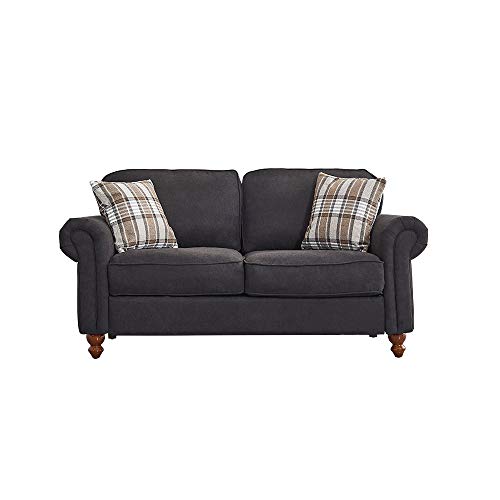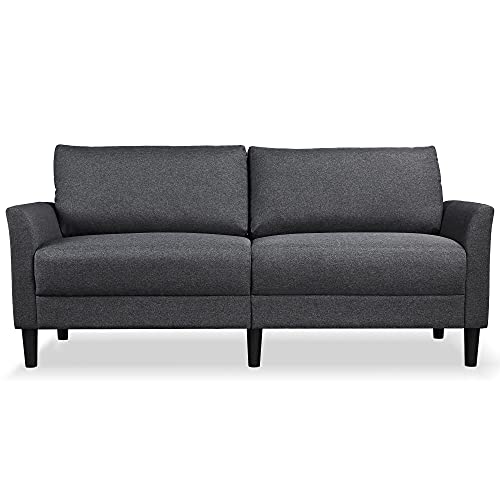Guide To 2 Seater Leather And Fabric Sofa: The Intermediate Guide For …
페이지 정보
작성자 Marylou 댓글 0건 조회 8회 작성일 24-10-24 00:08본문
 Choosing Between a 2 Seater Leather and Fabric Sofa
Choosing Between a 2 Seater Leather and Fabric SofaIt can be difficult to decide between fabric and leather when you are searching for a new sofa. This is particularly the case if you're not a professional with experience with furniture.
If you have children or live in apartments The leather option might be right for you. It is easy to clean and looks stunning in most homes.
Comfort
A sofa is the focal feature of many people's living spaces and is a significant purchase. You want one that is comfortable to sit on for a long time and looks good, is in line with your room style and will endure the test of time. The decision between 2 seater fabric settee or leather is a difficult decision However, it is essential to consider your needs as well as your lifestyle and budget prior to making a decision.
Leather is a premium, luxurious material that exudes class and luxury in any home. It is durable and stain-resistant, as well as resistant to children and pets and can last for a long period of time with proper care. However, it could be more expensive upfront and may require regular conditioning to prevent peeling or cracking.
large 2 seater fabric sofa sofas come in a wide range of styles, colors and fabrics. They can be cheaper than leather sofas. They are also soft and more cosy, with the ability to feel "broken in" right from the beginning. They are susceptible to dust mites and pet hairs and may need frequent cleaning. There are now hypoallergenic fabrics as well as new technology available.
The life-span of a sofa made from fabric will depend on the quality of the material However, the majority of fabrics will last up to 15 years if properly maintained. Regular vacuuming and deep-cleaning will aid in keeping the fabric clean and free of stains and odours. They also can be stretched and flatten over time, just like leather. A lot of fabric 2 seater sofa couches are treated with chemicals to make them stain resistant and flame retardant. These can release volatile organic compounds that may alter indoor air quality and cause allergies.
Durability
When purchasing sofas, we often choose fabrics that are incredibly durable, as this is crucial if you have pets and children. You don't need to spend a lot of money upfront when you're likely to regret it after the first stain or claw. You don't want a cheap item that isn't durable enough for regular use.
Leather is also extremely tough with a tremendous tear strength. It can also last up to 4 times longer than fabric and it is naturally resistant to cracking, fading and flaking over time. It can be conditioned in order to restore its natural oils, and make it appear new.
Fabrics are a less expensive alternative and are available in a range of different colors, patterns, and textures to match any interior design scheme. They are also less difficult to clean than leather and can withstand a decent amount of wear and tear but they do tend to be more prone to moisture and can fade as time passes.
Microfiber is a good choice for its durability and comes in a variety of colors, however it's not as durable as genuine leather and will not be able to take the punishment of scratches. However, it's still an excellent choice for families due to of its resilience to spills and stains and it is easy to clean, generally with a damp cloth.
Suede however is a struggle to keep clean and can be even more difficult to repair than leather. It is also prone to losing its shape if it is not regularly maintained and can feel very rough to the roughness of the. It's also a thin material, and therefore may not be as sturdy as sheepskin or cowhide leather.
Allergens
Fabrics can have a major impact on allergies. It's important to know the way different options work. Fabrics tend to retain allergens like dust mites pet dander, and mold that can trigger symptoms of allergies like rhinitis, hay fever, asthma and eczema. These fabrics are ideal for their health.
Leather, on the contrary is not a reservoir of allergens and offers a constant level of comfort, regardless of the season. However, it can be a trigger for dermatitis, particularly in those who suffer from contact dermatitis and are sensitive to the chemicals used in tanning. To prevent skin reactions, it's essential to use products made from vegetable oils and to maintain a regular skincare routine.
Leather and fabric sofas are durable, but the material you select will have a significant effect on how well your couch is able to stand up to wear. A high-quality fabric will hold up to everyday use without sagging or fading and will resist spills and body oils with ease. Many modern couches come with stain resistant treatments to make cleaning easier.
Although you may not be able completely avoid an allergic reaction to the leather sofa, it can help to avoid allergens by keeping a lint roller nearby and regularly vacuuming your living area. This will lessen the amount of dirt, pet hair and dust mites you find on your sofa. If you're still suffering from allergies, try replacing your sofa with a hypoallergenic one. For example, a leather sofa made from vinyl or synthetic leather is less likely to collect dust mites and pet dander. It also will help you breathe easier.
Scratches
When you are buying a leather sofa, it is important to think about the amount of wear and tear you can anticipate from it. How long a sofa will last is contingent on the finish, color and the quality of the leather. You must also ensure it's durable enough to withstand spills or other accidents. This can be achieved by selecting a couch with a solid wood frame and high density foam cushions.
Leather is susceptible to being scratched due to a number of reasons, such as stretching, marking territory or reliving stress. Scratches can vary in severity in severity, ranging from minor surface scratches to severe punctures and cuts. Minor scratches can be repaired by applying a conditioner for leather to the area affected. This will restore the balance between oil and moisture in the leather and stop it from drying out or cracking. The extent of damage will determine the kind of treatment needed.
If you have pets, it's a good idea to trim their nails regularly to aid in preventing them from scratching your couch. You can also redirect your cat's scratching behavior by providing them with alternatives scratching surfaces such as sisal rope or cardboard. Another option is using a pet-safe furniture polish, that can be applied with a soft cloth to the affected area.
It is important to wash your leather couch regularly and keep it out of heat and direct sunlight, as they can dry it out. This could cause it to split and become difficult to repair and usually requires reupholstery. It is recommended to use a leather conditioner to keep the leather soft.
Smell
Leather couches tend to smell a little different than fabric. This is due to the fact that it's more porous and will absorb unwanted odors such as smoke, body odor or food very easily. The good thing is that the smells will usually disappear after a while and especially when you use a nontoxic and fragrance-free cleaner.
However, if the odor is intense, it could indicate that there's something wrong with the foam. This is usually caused by chemical off-gassing from petroleum-based polyurethane. If this is a problem, look for couches manufactured with CertiPUR US certified latex or natural latex.
Another method to determine faux leather is to feel for bumps or a texture on the back of a sofa. This is a sure sign that it's not genuine top grain leather. You can also perform a visual check by tilting the sofa to one side and looking for any exposed upholstery backing. If you smell it, it's probably a synthetic substance like polyester or polyurethane. These types of materials will have a distinct scent than leather.
Leather couches are more likely to be prone to absorbing smells, the most effective way to avoid this is to regularly clean your sofa. This will keep it looking its best and fresh as well as preventing it from becoming stiff or cracked in time. Begin by vacuuming and dusting the couch with baking soda (a natural method to get rid of odors). This should be done at least every two weeks to get rid of any dirt or dust. Apply leather conditioner to keep the texture and color of your sofa.

댓글목록
등록된 댓글이 없습니다.